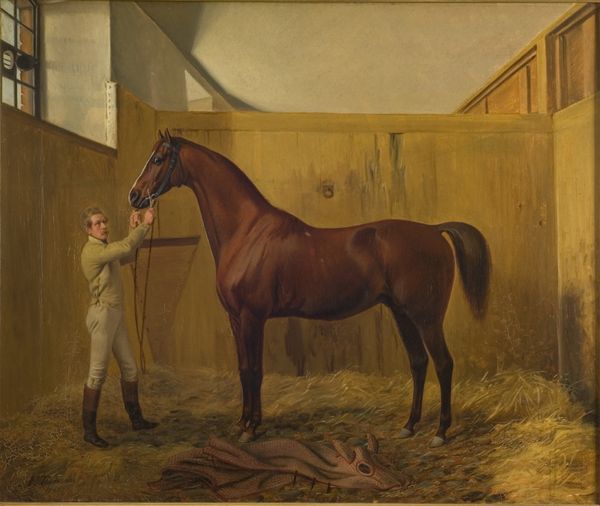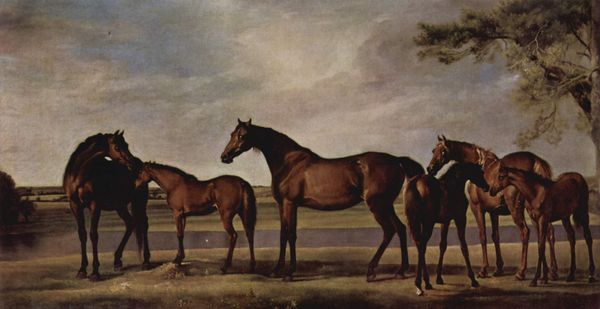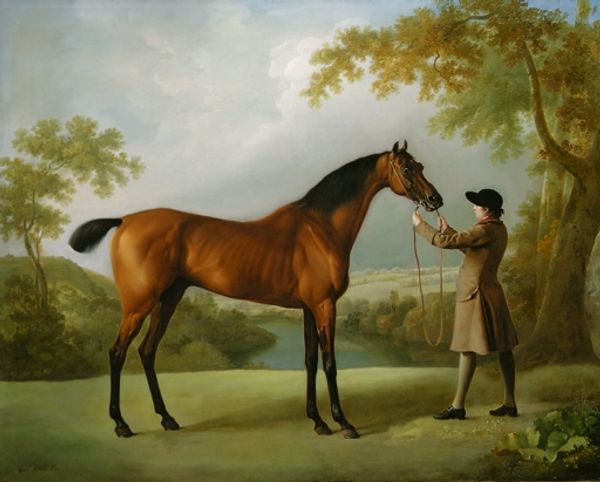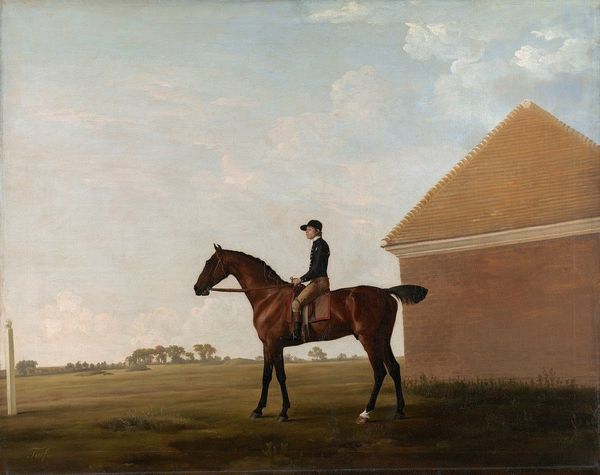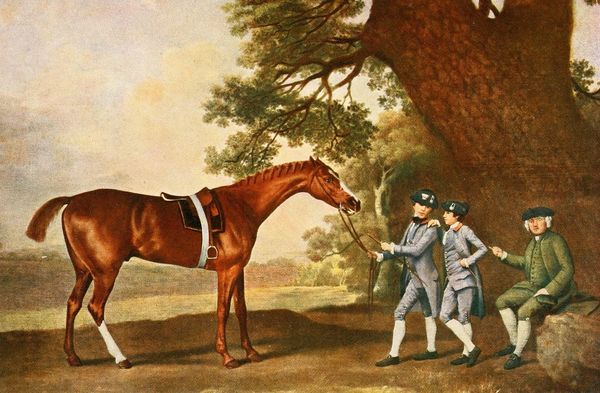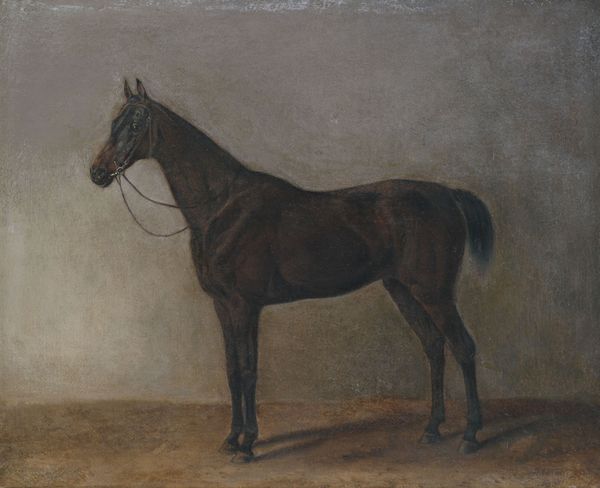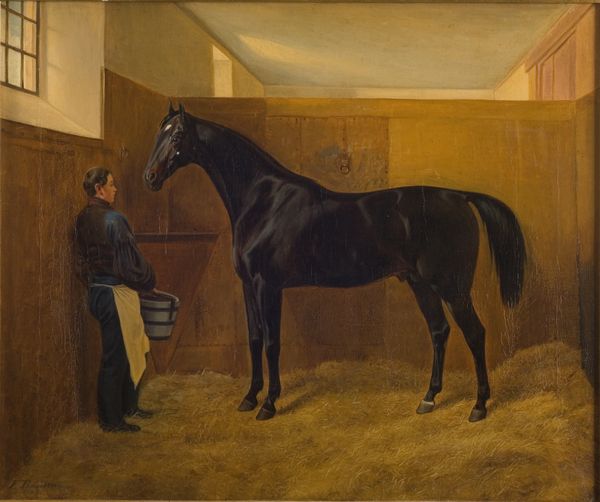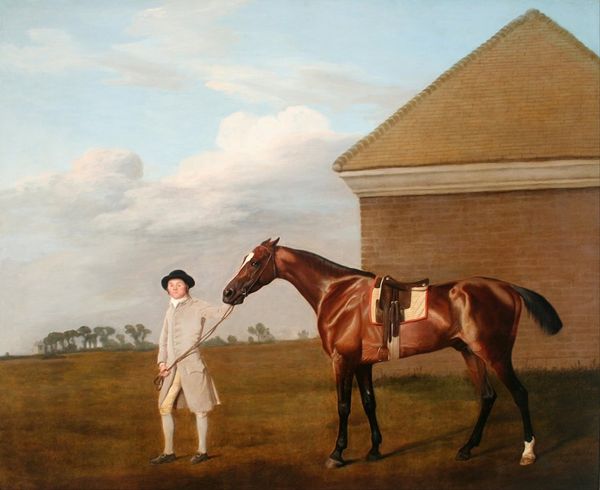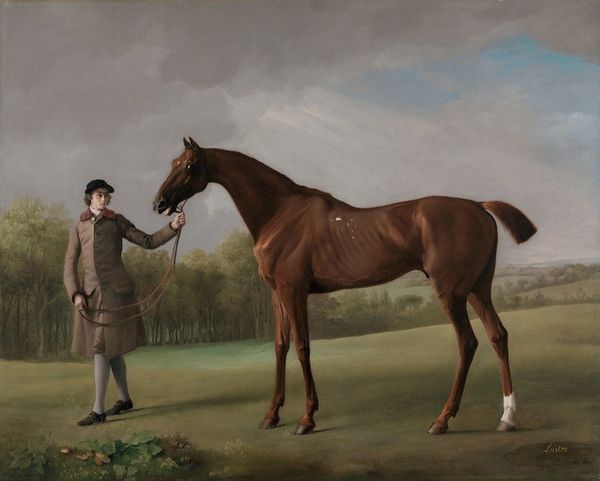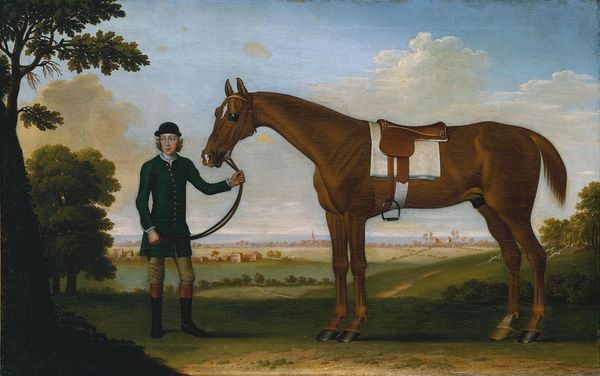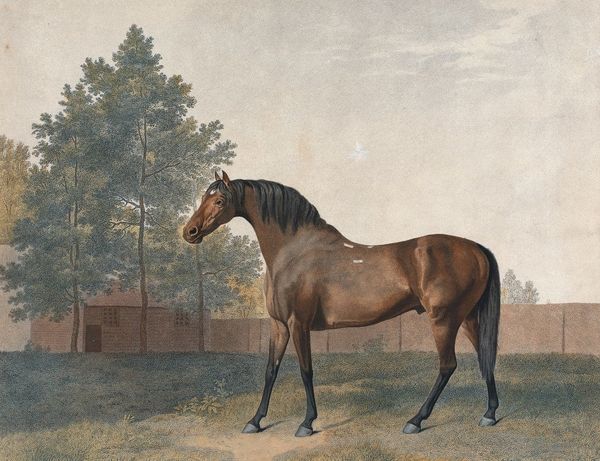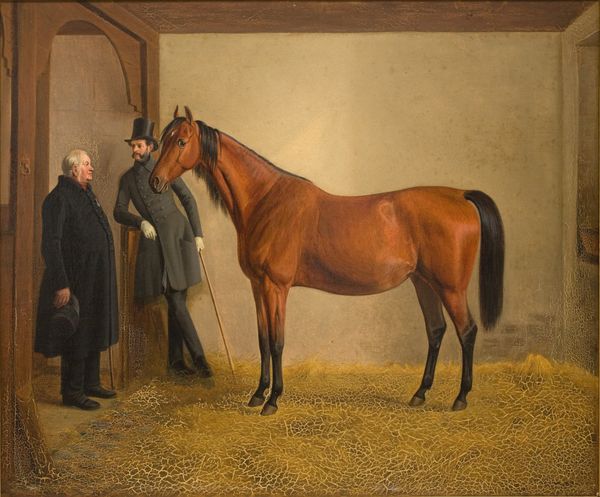
Dimensions: support: 1010 x 1264 mm
Copyright: CC-BY-NC-ND 4.0 DEED, Photo: Tate
Curator: This is Benjamin Marshall's "Emilius," held in the Tate Collections, measuring just over one meter by one and a quarter meters. Editor: There's a rather melancholic atmosphere to this painting, isn't there? The horse seems to stand alone in a vast, muted landscape. Curator: The composition emphasizes the horse's musculature and stance; note how the lines of its body echo the horizon, creating a sense of grounded power. Editor: Horses, historically, are potent symbols of virility, status, and freedom. The careful rendering suggests pride of ownership and the symbolic role of the horse within a certain social class. Curator: Indeed, the muted color palette and somewhat diffused light contribute to a harmonious, balanced whole. Editor: The horse, set against the racecourse, evokes the continuity of sport and tradition, and human relationship to animals. It is a snapshot of cultural values. Curator: Precisely, and observing the lines and textures reveals a study in balance, weight, and form. Editor: Through a focus on symbolism, we understand the values embedded into its narrative. It invites deeper reflection on history.
Comments
Join the conversation
Join millions of artists and users on Artera today and experience the ultimate creative platform.
tate 7 months ago
⋮
This portrait of a victorious racehorse, shown beside the Newmarket course, is typical of the numerous scenes of the Turf that were Marshall's main output. Emilius, a bay colt foaled in 1820, had a short but successful racing career, winning the Derby in 1823.Like many sporting artists, Marshall was himself an enthusiastic sportsman and was also a racing correspondent for the 'Sporting Magazine'. He was born in Leicestershire but from 1812-1825 he lived and worked near Newmarket, where, he claimed, 'I discover many a man who will pay me fifty guineas for painting his horse, who thinks ten giuneas too much for painting his wife'. Gallery label, September 2004

